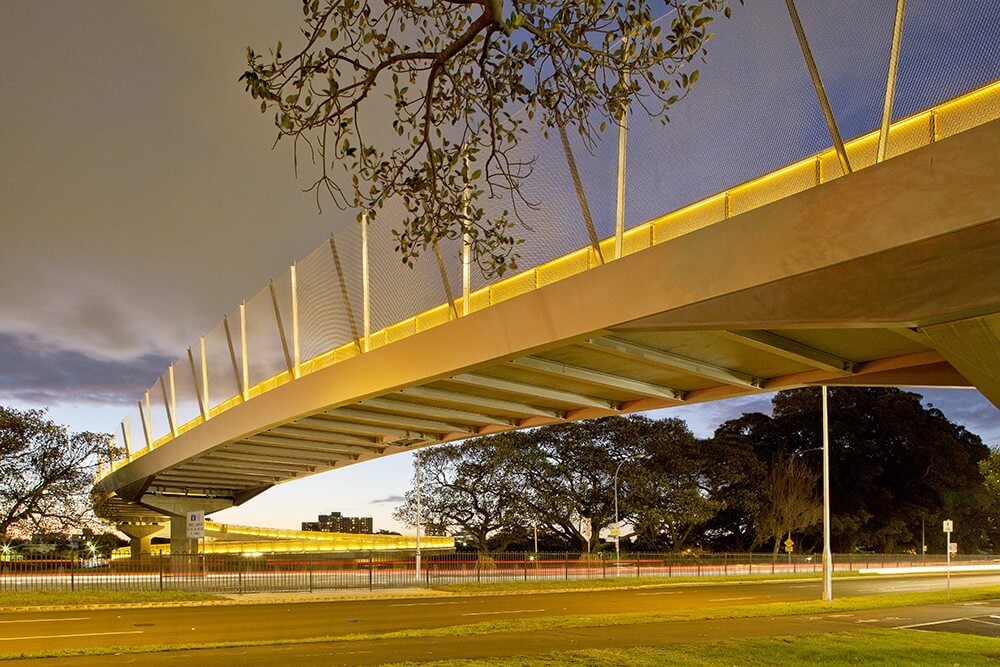Railing infill mesh safety barriers represent the commonest use of Jakob stainless steel Webnet. Mesh barriers installed on bridges, staircases, atriums, carparks and other structures help prevent falls from height, in turn reducing the risk of injuries and death.
But with safety barriers of any kind, including those made from Webnet, climbability must also be addressed.
The key aim in in making a barrier non-climbable is to prevent footholds. In many types of safety barriers, the regulations are very specific. For example, the National Construction Code states that the openings on a horizontal barrier should be no more than 100mm-120mm (depending on the structure) to prevent footholds.
But with mesh barriers, there are no specific regulations for preventing footholds.
So, how do you make Webnet mesh safety barriers non-climbable? The flexible nature of Webnet contributes, as it provides little support for climbing. But it’s also important to go further in climbing prevention.
You can do this with Webnet barriers in a couple of ways.
Mesh configuration method
One is through the configuration of the mesh – e.g. the aperture-opening size. Generally speaking, the smaller the opening size on a mesh screen, the harder it is to get handholds and footholds on it.
While there is no national safety code for mesh size, the generally accepted standard in the industry is that it should be no more than 40mm.
That said, there is no guarantee that all certifiers will approve of 40mm mesh! And in some cases local regulations may require 25mm mesh – e.g. for over a railway line.
So it’s important to speak to your certifier before going ahead with the barrier, to ensure you’re on the right track.

Full height mesh safety barriers
Another way of ensuring a barrier is non-climbable is by making it full height.
Full height barriers are not always an option, but they can be used in some structures – such as multi-storey carparks or terraces, and for indoor atriums.
Making a multi-level mesh barrier full height not only ensures it’s non-climbable. It also makes the barrier into an anti-throw screen, removing any possibility of objects falling or being thrown into the void below.
It may also be possible to use a larger mesh size in a full-height screen – e.g. up to 60mm.
Examples of non-climbable Webnet mesh safety barriers
The Albert Cotter cycle and walk bridge in Sydney’s Moore Park has a mesh barrier that not only prevents falls but is also elegant and almost sculptural in appearance. The size of the mesh and the height of the screen make it virtually impossible to climb this barrier, or to throw objects over the bridge’s edge.
Tensile installed full height Webnet mesh barriers across the multi-storey terraces of Inner Sydney High School’s new building. The six-storey outdoor screen provides full fall-protection for students and staff, but without obstructing natural light entry to the building.
The Melbourne University’s School of Design atrium has a full-height mesh safety barrier that runs over all five levels to the ceiling. The barrier offers complete safety and anti-throw prevention, while still allowing for sight-lines across the various levels.
Get in touch to discuss how we can help you create a commercial mesh safety barrier that is non-climbable.






































